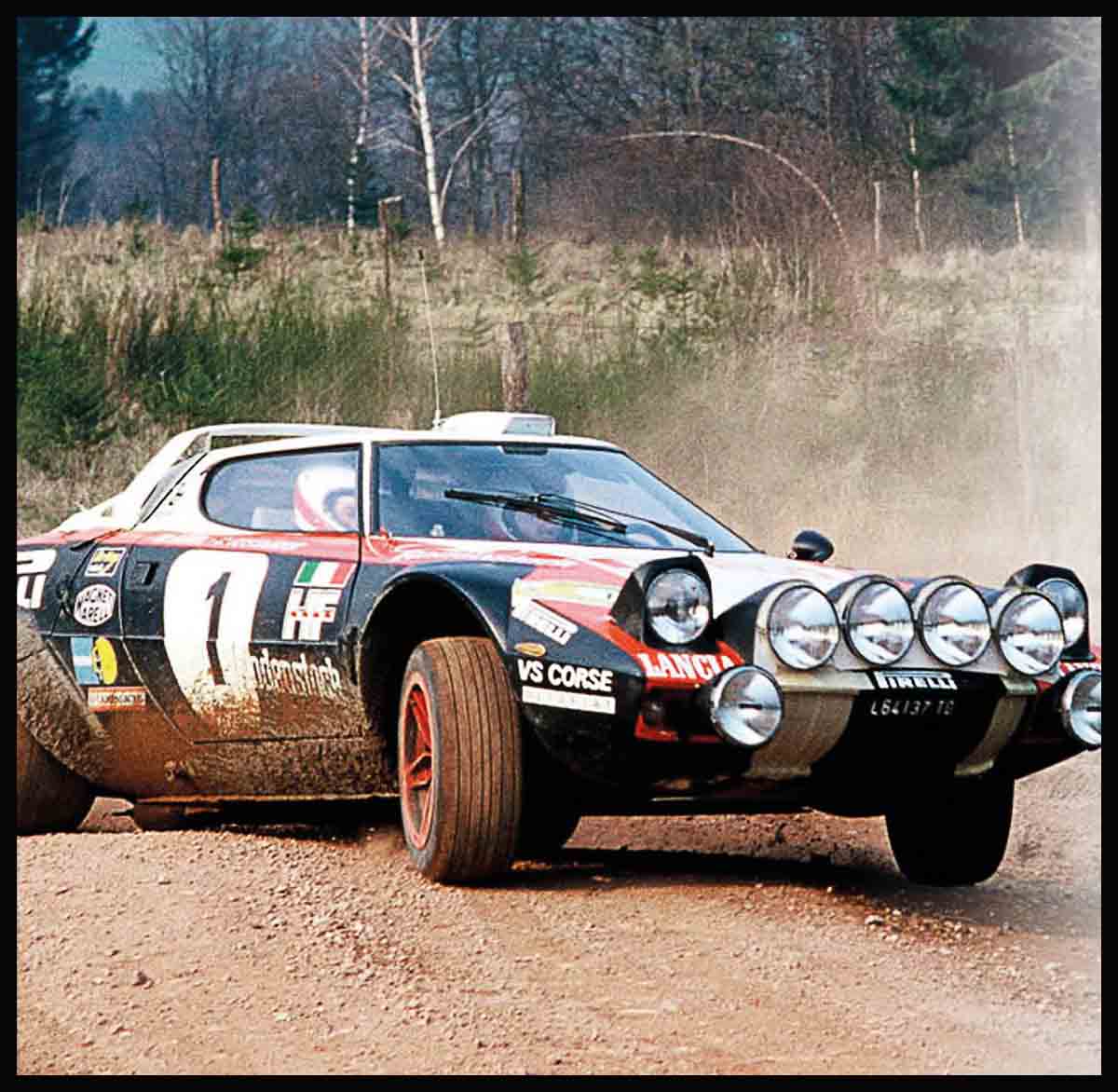
Lancia Stratos HF
The winner of the Rally World Championships in 1974,1975, and 1976, the Lancia Stratos was developed from a striking, fluorescent orange, wedge-shaped concept car designed by Bertone and launched at the Turin Motor Show in 1971. Swapping that model’s four-cylinder Lancia engine for Ferrari’s Dino V6 made it one of the decade’s most charismatic stars, and—in the right hands, at least—an authentically potent weapon when it came to top-level motor sport.
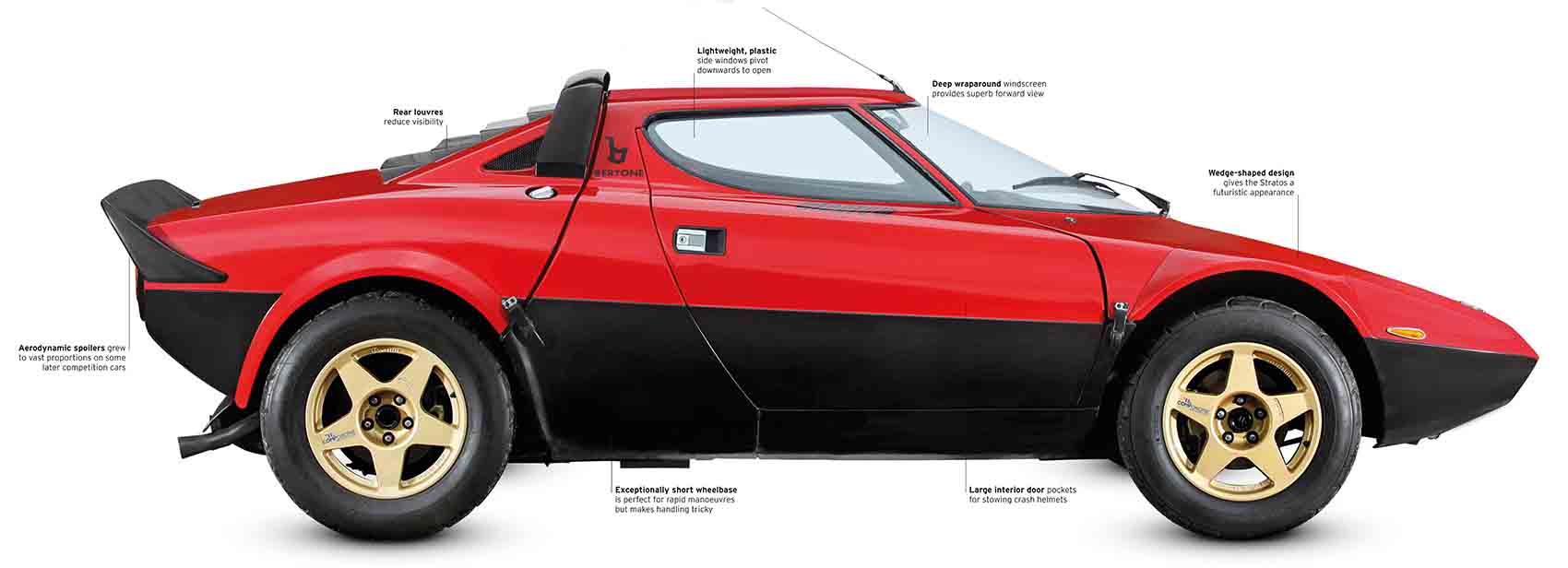
BERTONE’S CONCEPT was the design work of Marcello Gandini who, in a bid to win some business from Lancia, created a machine quite unlike any other.
Very compact, with a low front nose and high tail, the Stratos offered fantastic forward visibility thanks to its unique, deep, crescent-shaped windscreen, but almost nothing to the rear. It was light, as little as 1,984 Ibs (900 kg), and with more than 500 hp in the most extreme version the 2.4-liter Ferrari engine ensured it was devastatingly quick.
In expert hands the Stratos was also an astonishingly capable rally car, winning three consecutive world championships during the 1970s, so it more than earned its place among the all-time international greats.
SPECIFICATIONS
| Model | Lancia Stratos HF, 1973-80 |
| Assembly | Turin, Italy |
| Production | 492 |
| Construction | Fibreglass and steel |
| Engine | 2,418 cc, V6 |
| Power output | 190 bhp |
| Transmission | 5-speed manual |
| Suspension | Coil springs front and rear |
| Brakes | All-round discs |
| Maximum speed | 143 mph (230 km/h) |
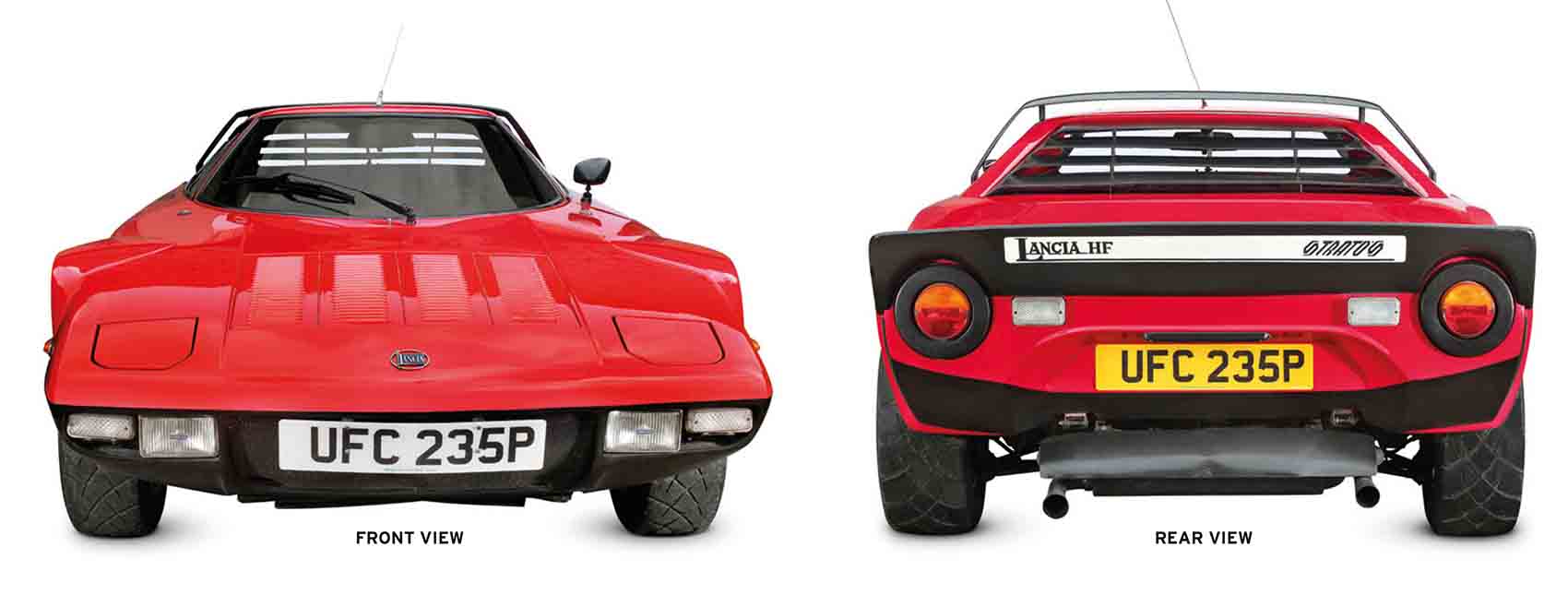
Styling
So short as to be almost square when viewed from above the compact dimensions of the Stratos HF are purposeful in the extreme. Its striking, wedge-shaped profile is made possible by the engine being mounted directly behind the driver and ahead of the rear axle.

Stratos badge
This wild, almost psychedelic graphic was specially created for the car at Bertone’s design studios. It is in stark contract to the traditional Lancia badge on the stubby bonnet, featuring the traditional flag-on-a-lance regalia.
ON THE ROAD
Offering Corvette levels of performance in something barely larger than the original Honda Civic, the Stratos was an outstanding piece of kit, even without its impressive record in international motorsport. The fact that many of the parts were shared with other companies in Lancia’s parent group, Fiat, did nothing whatsoever to dim its immense attraction. The astonishing Bertone profile gave the Stratos immediate kerb appeal, and Lancia the kind of big draw it had been lacking for years. Prices remained high because it was, and is, an exceptional car. It was hot, frantic, noisy, and somewhat uncomfortable, but it was a genuine milestone for the marque, and decades later, it is still remembered as one of rallying’s all-round greats.
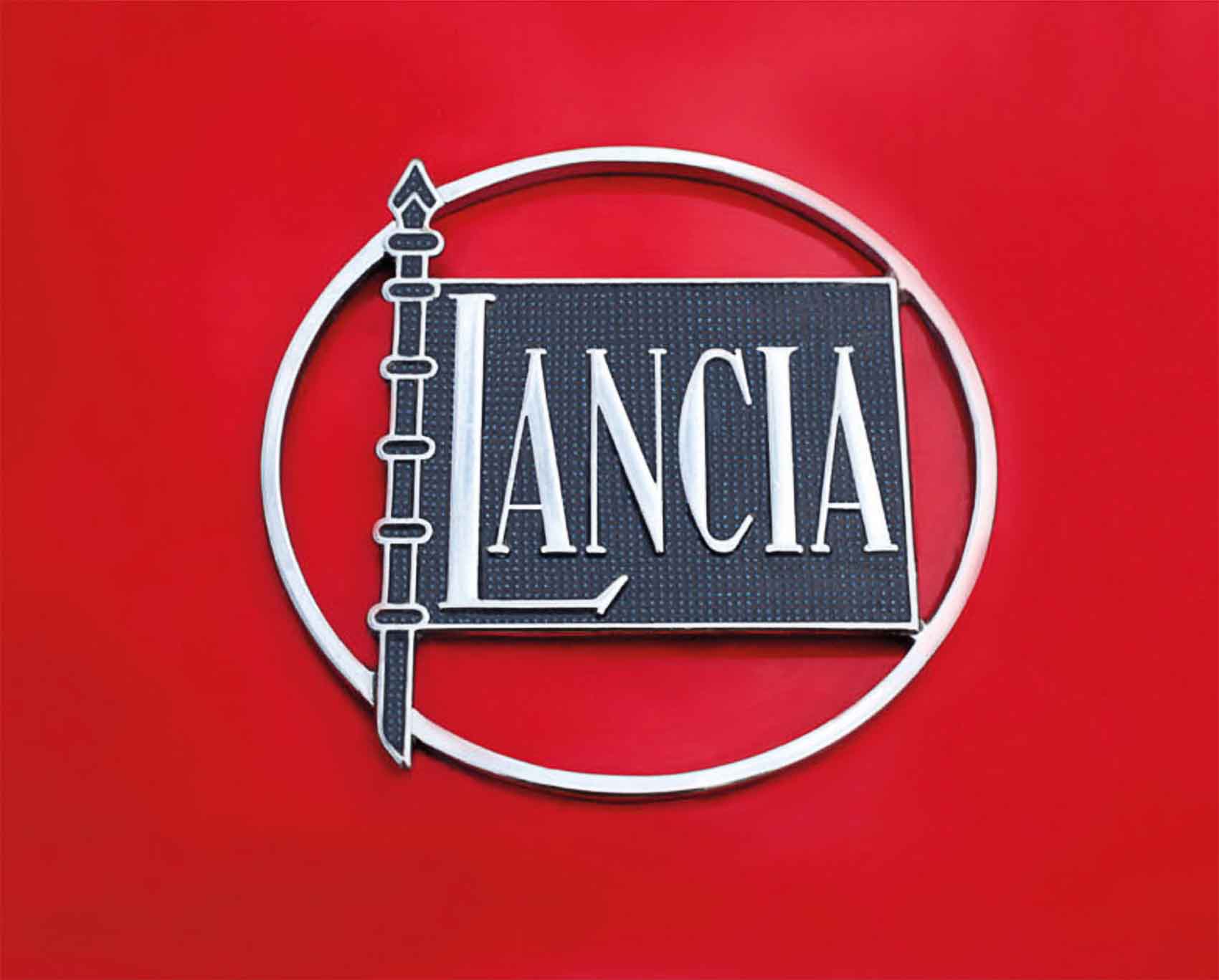
Lancia badge positioned on bonnet
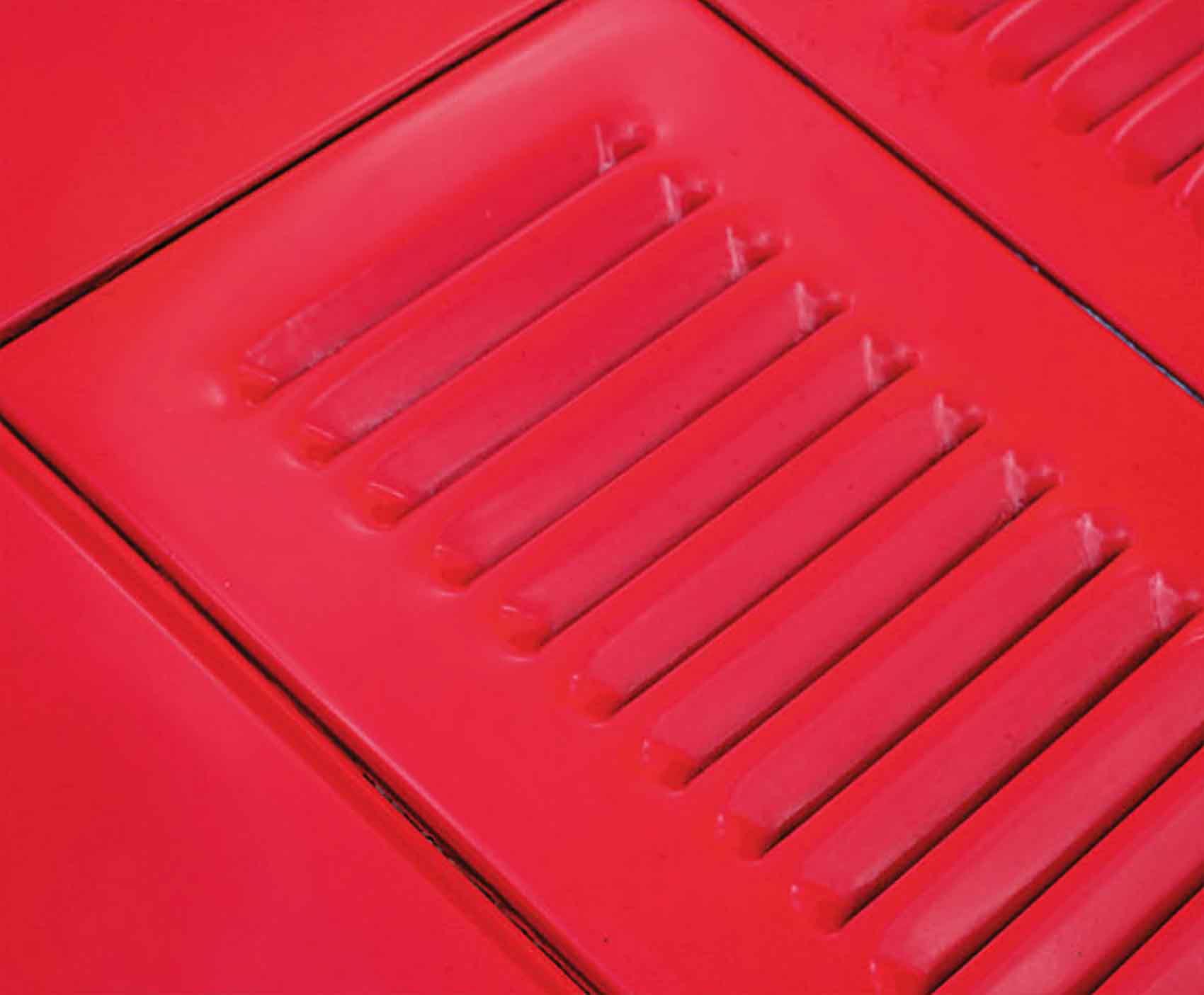
Louvred body panels improve engine cooling
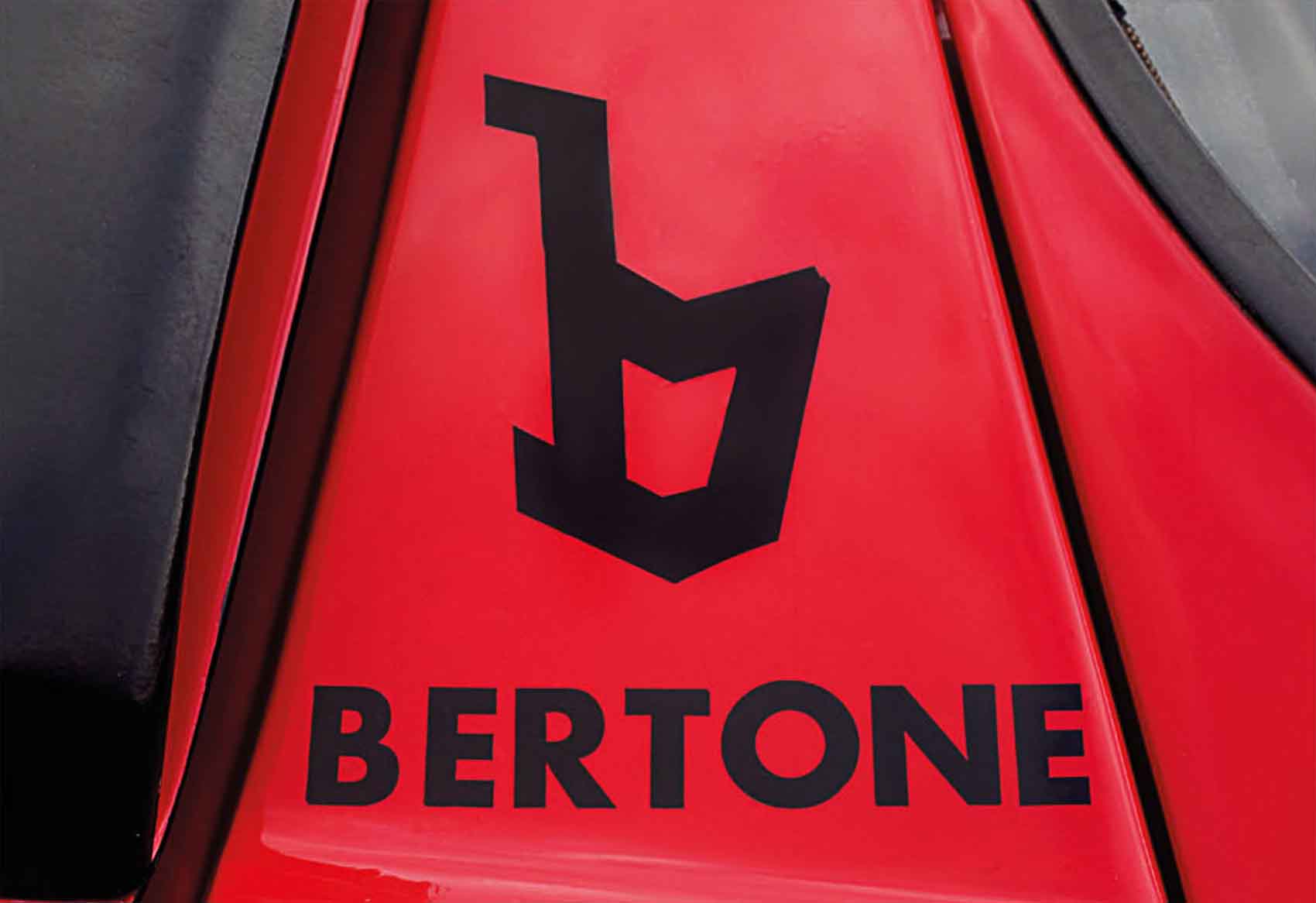
Bertone badge and logo
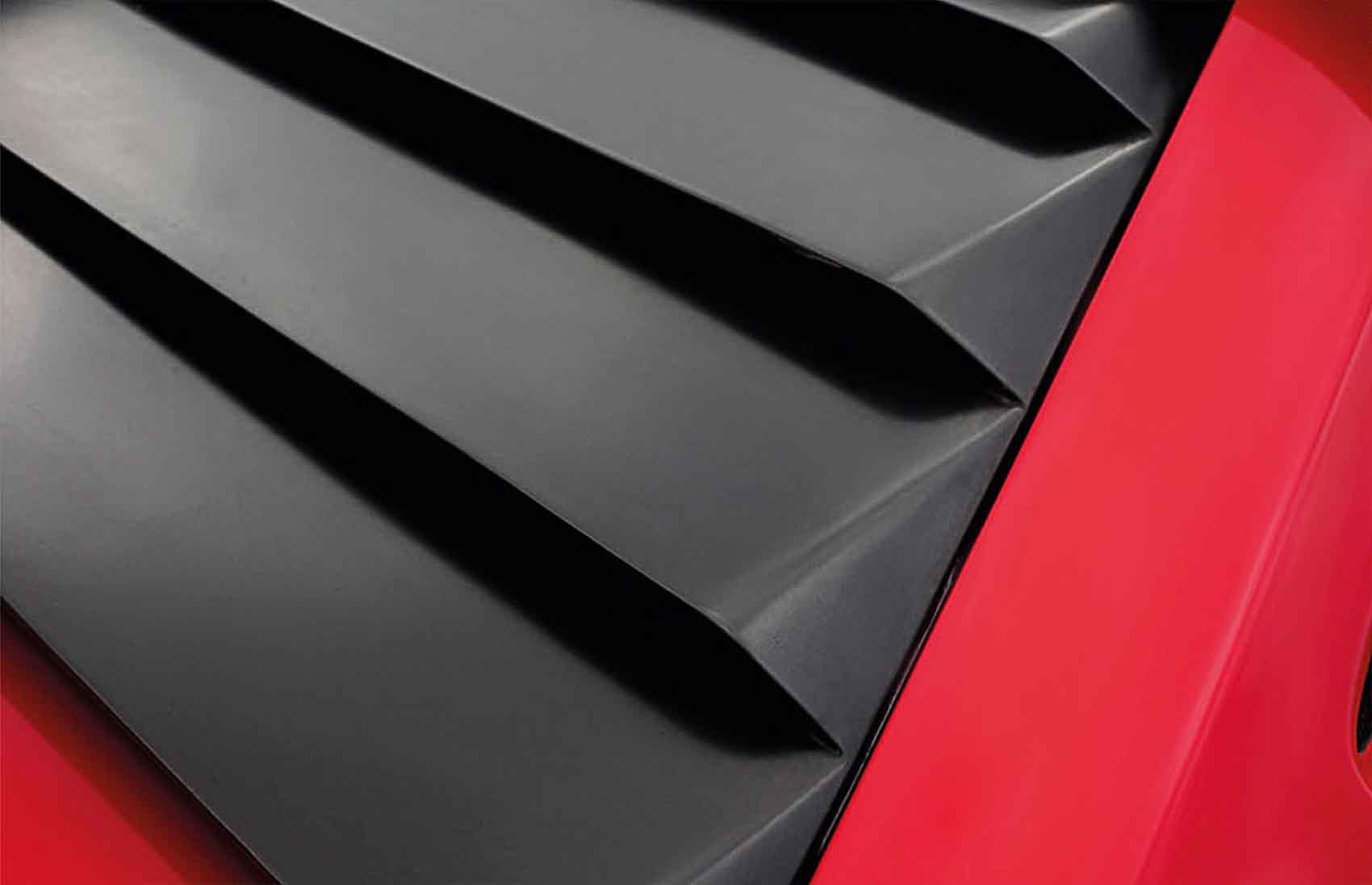
Black louvres shade the rear screen but restrict vision
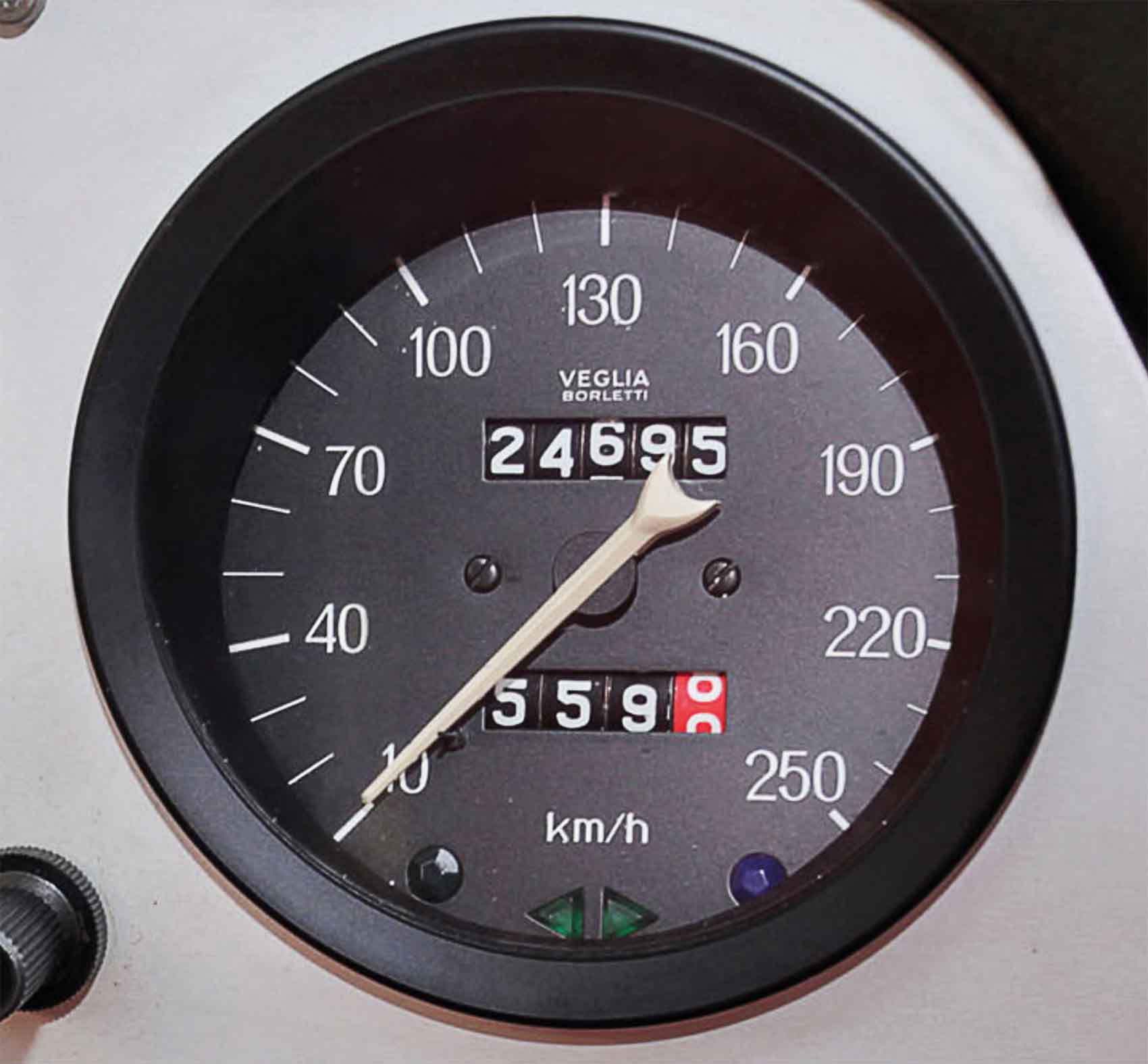
Simple speedometer—top speed was 143 mph (230 km/h)
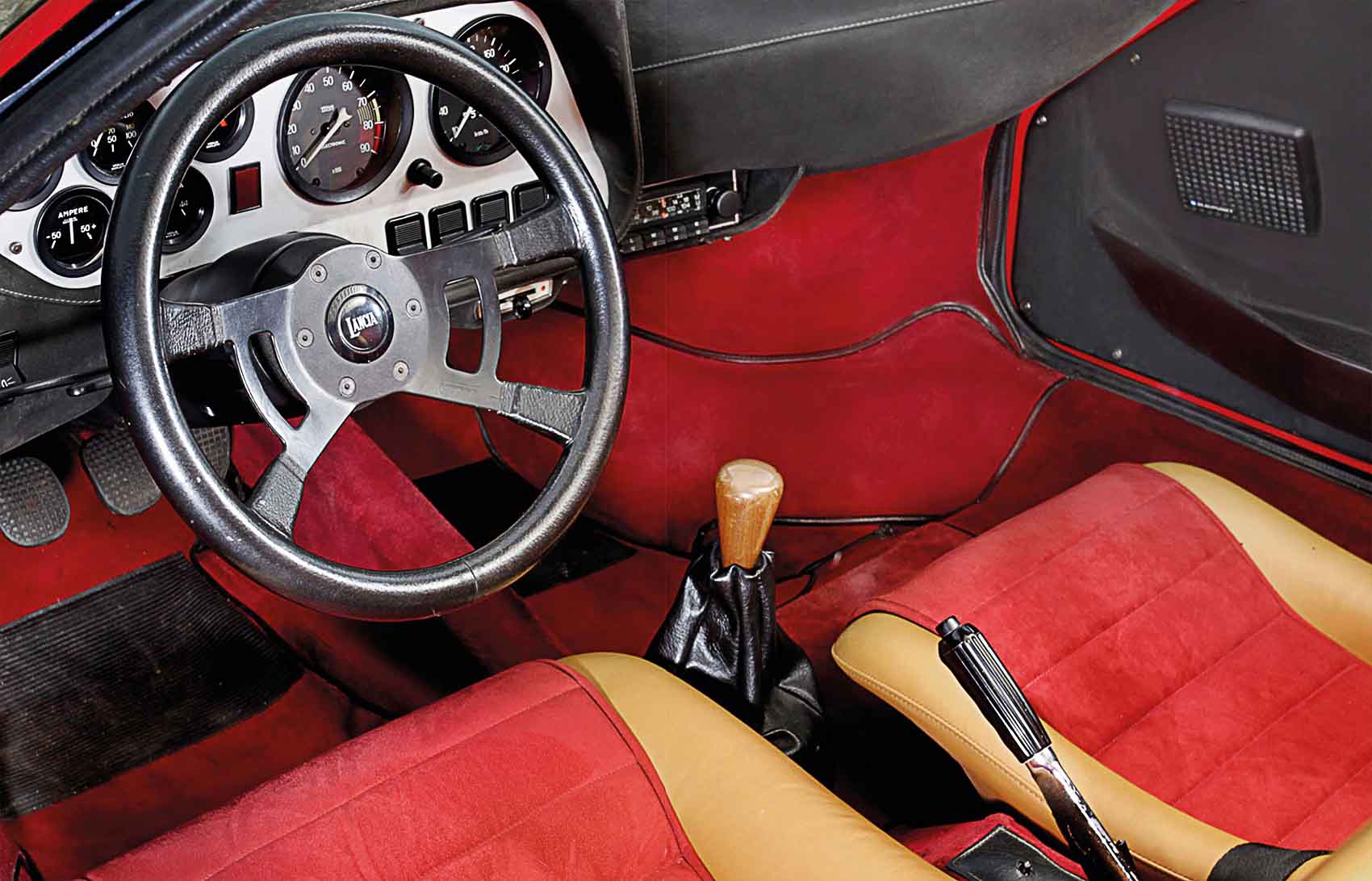
The stark dashboard contrasts against the vivid interior
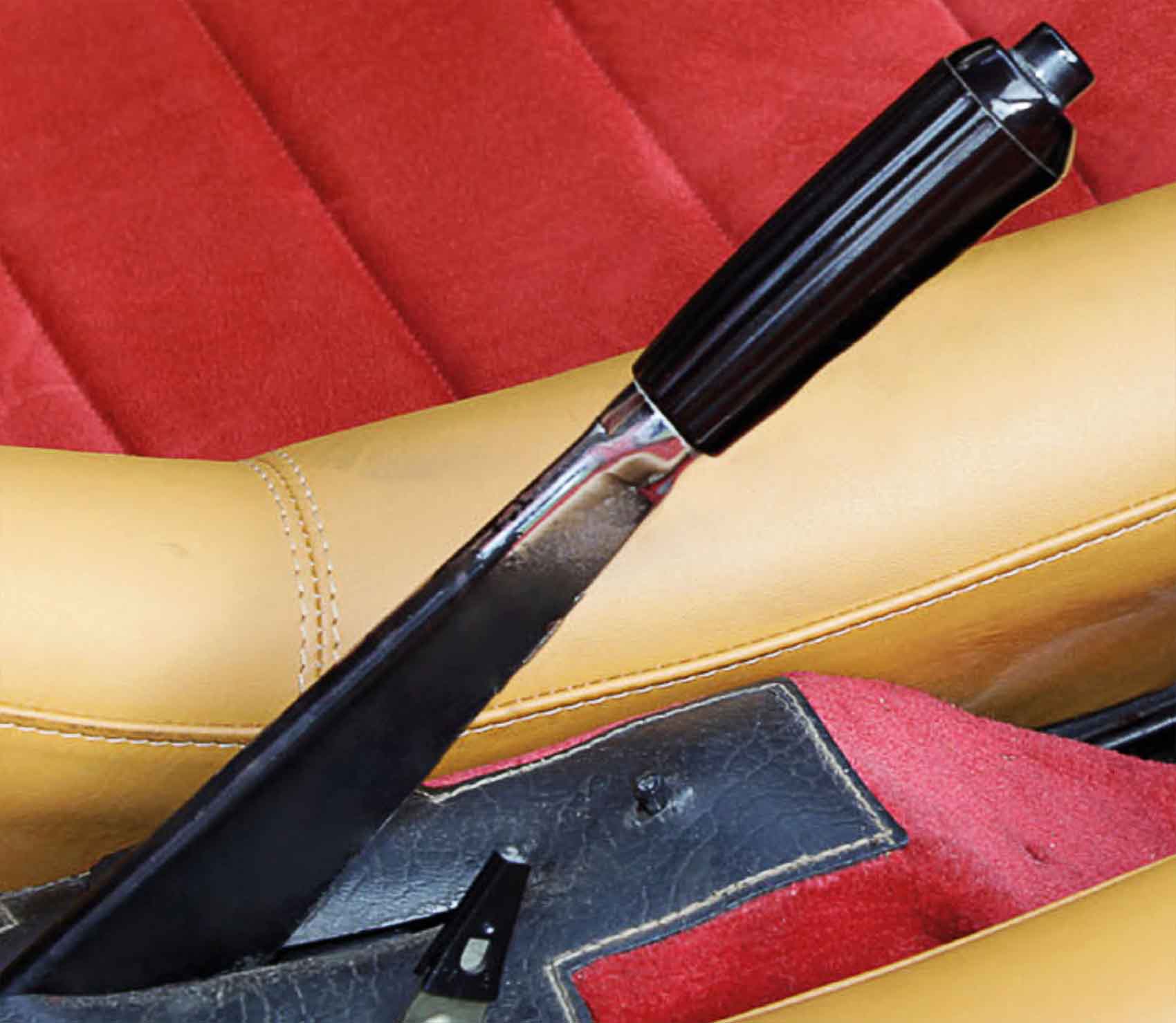
Conventional handbrake lever, operating on rear wheels
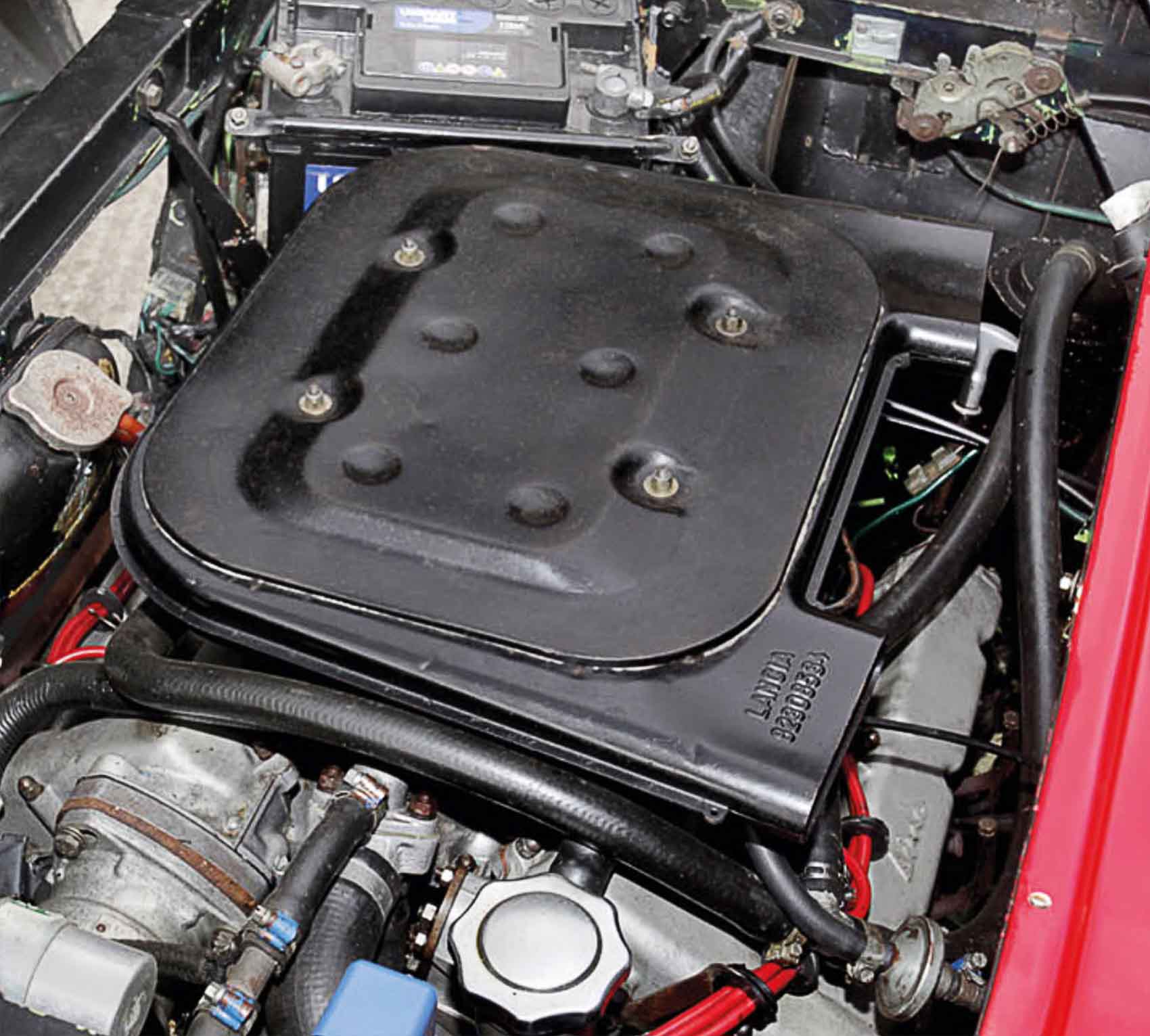
The Stratos’ 2.4-liter Ferrari engine
It is a quote. The Classic Car Book – The Definitive Visual History 2016




